From its Gothic cloister and Baroque chapels to its
splendid, 19th-century façade, the Cathedral, dating from 1298, is an
amalgam of architectural styles, each one paying homage to a period in
Spain’s religious history. Records show that an early Christian
baptistry was established here in the 6th century, later replaced by a
Romanesque basilica in the 11th century, which gave way to the current
Gothic Cathedral. This living monument still functions as the Barri
Gòtic’s spiritual hub.
Plaça de la Seu 93 315 15 54 Metro: Liceu, Jaume I
Cathedral
Casa de L’Ardiaca
Museu Diocesà
|
|
The most impressive
entrance to the Cathedral is its main portal on Plaça de la Seu. As you
enter, to the left lie a series of chapels, the organ and elevators that
take you to the terrace for phenomenal views of the Barri Gòtic .
The Casa de L’Ardiaca lies to the right of the Cathedral’s main
entrance (at Carrer Santa Llúcia 1); the Museu Diocesà is to the left
(at Avinguda de la Catedral 4).
|
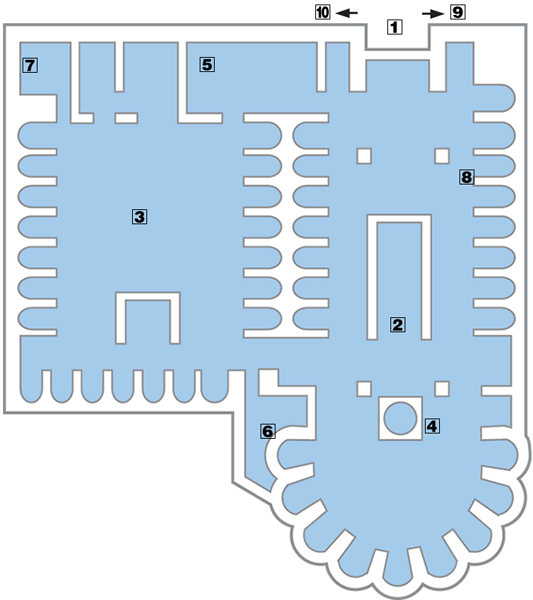
Cathedral Floor Plan
|
Bask in the Cathedral’s Gothic glory at the outdoor terrace of Estruch café on Plaça de la Seu.
|
|
|
Organ and choral concerts are usually held monthly; enquire at the Pia Almoina. Watch sardanes – Catalonia’s regional dance – in Plaça de la Seu (6pm Sat, noon Sun).
|
|
Top 10 FeaturesMain Façade Flanking the eye-catching entrance of the 19th-century façade are twin towers, Modernista stained-glass windows and 100 carved angels. (Currently under scaffolding for long-term restoration.)
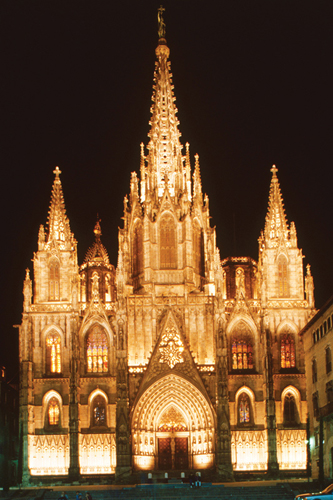
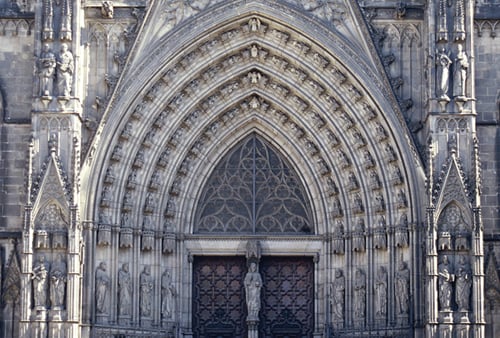
Main entrance
Choir Stalls The
lavish choir stalls (1340), crowned with wooden spires, are decorated
with colourful coats of arms by artist Joan de Borgonya.
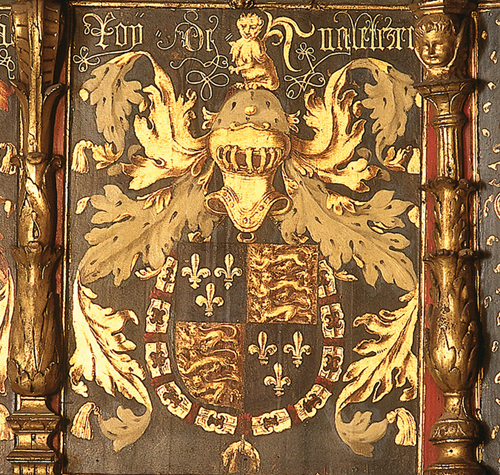
Cloister Graced
with a fountain, palm trees and roaming geese, the cloister dates back
to the 14th century. The mossy fountain is presided over by a small,
iron statue of Sant Jordi (St George).
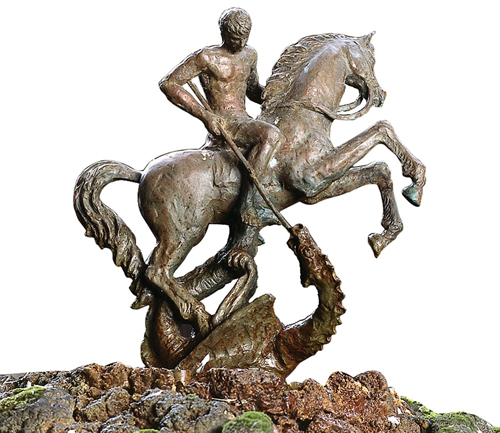
Crypt of Santa Eulàlia In
the crypt’s centre lies the graceful alabaster sarcophagus (1327) of
Santa Eulàlia, Barcelona’s first patron saint. Reliefs depict her
martyrdom. Capella del Santíssim Sacrament i Crist de Lepant This 15th-century capella
(chapel) features the Christ de Lepanto, which, legend has it, guided
the Christian fleet in its 16th-century battle against the Ottoman
Turks. Capella de Sant Benet Honouring Sant Benet, the patron saint of Europe, this chapel showcases the 15th-century altarpiece Transfiguration of the Lord by illustrious Catalan artist Bernat Martorell. Capella de Santa Llúcia This
lovely Romanesque chapel is dedicated to Santa Llúcia, the patron saint
of sight and vision. On her saint’s day (13 December), the blind (els cecs) arrive in large numbers to pray at her chapel. Nave & Organ The
immense nave is supported by soaring Gothic buttresses, which arch over
16 chapels. The 16th-century organ looming over the interior fills the
Cathedral with music during services.
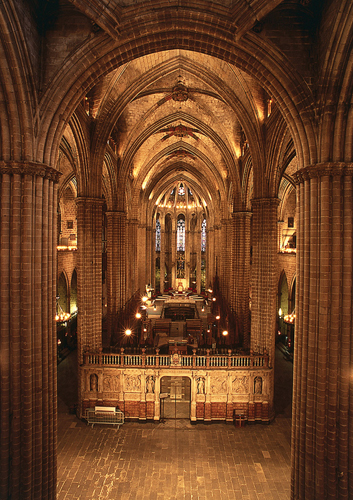
Pia Almoina & Museu Diocesà The
11th-century Pia Almoina, once a rest house for pilgrims and the poor,
houses the Museu Diocesà, with Romanesque and Gothic works of art from
around Catalonia. Casa de L’Ardiaca Originally
built in the 12th century, the Archdeacon’s House sits near what was
once the Bishop’s Gate in the city’s Roman walls. Expanded over the
centuries, it now includes a leafy patio with a fountain.
|